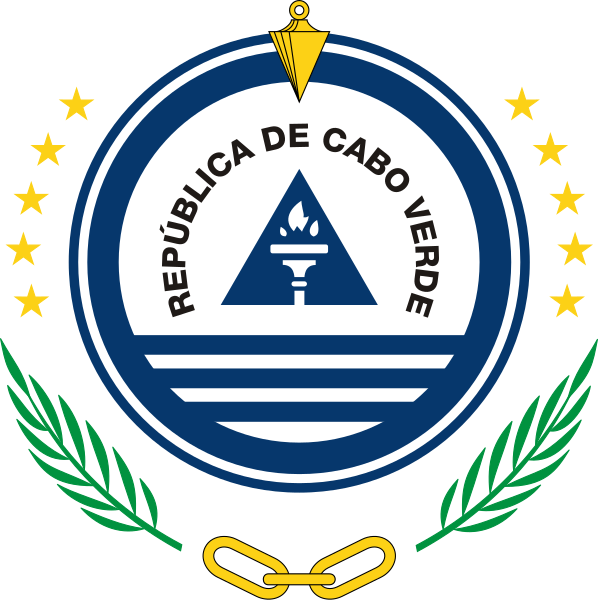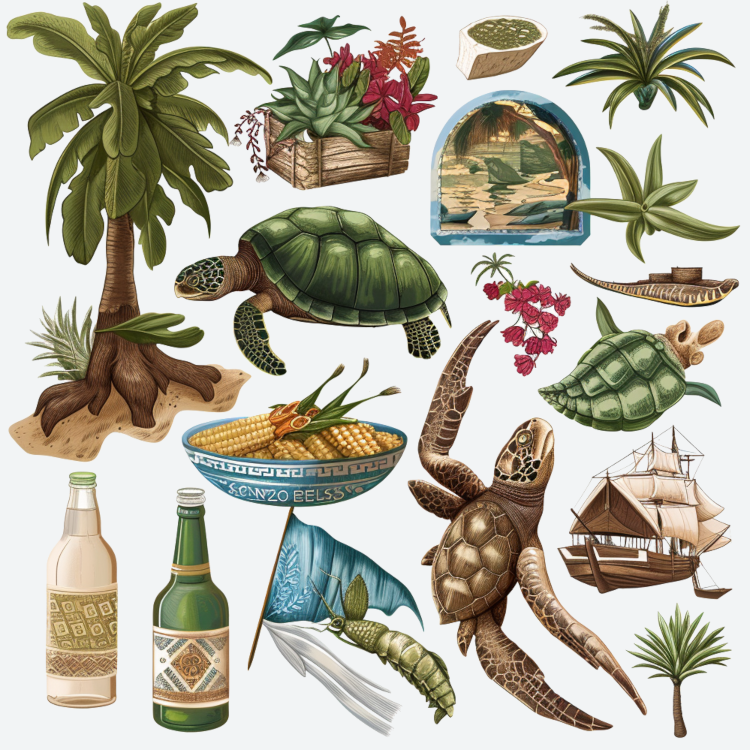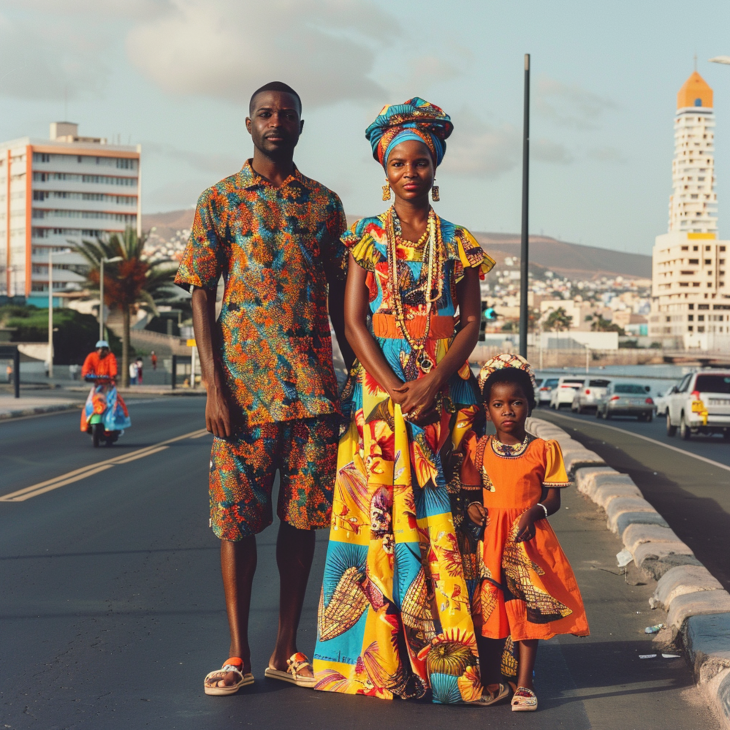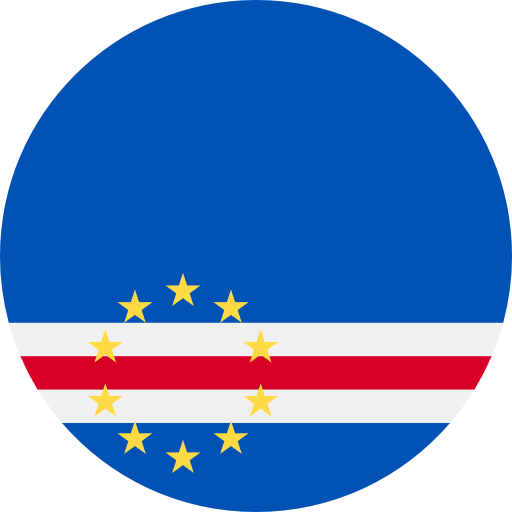About CV

Location
Cabo Verde, also known as Cape Verde, is an island country located in the central Atlantic Ocean, approximately 570 kilometers (350 miles) off the coast of West Africa.
Capital
The capital city of Cabo Verde is Praia, located on the southern coast of the island of Santiago.
Population
Cabo Verde has a population of approximately 560,000 people, making it one of the most sparsely populated countries in Africa.
Languages
The official language of Cabo Verde is Portuguese. However, Cape Verdean Creole, a Portuguese-based Creole language, is widely spoken by the local population.
Religion
The majority of the population in Cabo Verde adheres to Roman Catholicism. However, there is also a significant Protestant minority.
Geography
Cabo Verde is an archipelago consisting of ten main islands and several smaller islets. The islands are of volcanic origin, with rugged mountainous terrain and a semi-arid climate. The country is known for its stunning beaches, rugged coastlines, and diverse landscapes.
Economy
Cabo Verde's economy is primarily based on services, including tourism, commerce, and financial services. The country has made significant strides in developing its tourism industry, attracting visitors with its natural beauty, cultural heritage, and warm climate. Additionally, remittances from Cabo Verdeans living abroad contribute significantly to the country's economy.
Currency
The currency of Cabo Verde is the Cape Verdean Escudo (CVE).
Politics
Cabo Verde is a republic with a semi-presidential system of government. The President is the head of state, while the Prime Minister is the head of government. The country has a multi-party political system, with regular elections held every five years.
Culture
Cabo Verde has a rich cultural heritage influenced by its African, European, and Creole roots. Music, particularly genres such as morna and coladeira, plays an important role in Cape Verdean culture. The country is also known for its traditional cuisine, which features a variety of seafood, rice, and beans dishes.

National Items of Cabo Verde
Green Turtle
The Green Turtle (Chelonia mydas) is a significant symbol in Cabo Verde, representing the rich marine biodiversity and conservation efforts in the archipelago.
Dragon Tree
The Dragon Tree (Dracaena Draco) is a unique and iconic plant in Cabo Verde. It symbolizes endurance, resilience, and the unique flora of the islands.
Cachupa
Cachupa is the national dish of Cabo Verde, made from corn, beans, and often fish or meat. It symbolizes the rich culinary heritage and the importance of communal meals in Cabo Verdean culture.
Morna Music
Morna is a traditional music genre from Cabo Verde, often featuring melancholic melodies and lyrics. It symbolizes the rich musical heritage, cultural identity, and artistic expression of the Cabo Verdean people.
Cape Verdean Creole (Kriolu)
Cape Verdean Creole (Kriolu) is the widely spoken language in Cabo Verde. It symbolizes the linguistic heritage, cultural identity, and social cohesion of the Cabo Verdean people.
Grogue
Grogue is a traditional Cabo Verdean alcoholic beverage made from sugarcane. It symbolizes the agricultural heritage and traditional beverage practices of the islands.
Cape Verdean Weaving
Traditional weaving in Cabo Verde, known for its intricate patterns and vibrant colors, symbolizes the rich artisanal heritage and cultural identity of the islands.
Baobab Tree
The Baobab Tree (Adansonia) is significant in Cabo Verde for its ecological and cultural value. It symbolizes longevity, strength, and the natural beauty of the islands.
Carnival of Mindelo
The Carnival of Mindelo is a vibrant and colorful festival celebrated on the island of São Vicente. It symbolizes the cultural heritage, festive spirit, and artistic expression of the Cabo Verdean people.
Brava Island
Brava Island, known as the "Island of Flowers," symbolizes the natural beauty, biodiversity, and cultural heritage of Cabo Verde.
Cape Verdean Traditional Dance
Traditional dances in Cabo Verde, such as Funaná and Batuque, symbolize the cultural heritage, artistic expression, and social traditions of the islands.
Cape Verdean Sailboat (Baleeira)
The traditional Cabo Verdean sailboat, or Baleeira, symbolizes the maritime heritage, fishing traditions, and nautical skills of the Cabo Verdean people.
Santo Antão Canyons
The canyons and mountainous landscapes of Santo Antão symbolize the rugged natural beauty and geological diversity of Cabo Verde.
Cape Verdean Lobster
The Cape Verdean Lobster represents the rich marine resources and culinary traditions of the islands.

The national anthem of Cabo Verde is called "Cântico da Liberdade" in Portuguese. Here are the lyrics in Portuguese and their English translation:
Mar e Terra longe
Céu azul e sol radiante
Verde mar e monte
Pelos montes, pelos vales
Tudo enfim e belo e grande
És Cabo Verde, um Paraíso
No mundo és um jardim florido
À beira-mar plantado
Com orgulho e coragem
Trabalhamos sem parar
Com passado de escravos
Aprendemos a libertar
E na senda do progresso
Caminhamos sem tréguas nem cansaço
E na rota da esperança
Construímos um mundo novo
Filhos do mesmo solo
Irmãos da mesma dor
Quebrando as cadeias
Conquistamos o esplendor
Na paz dos grandes bravos
Que enfrentaram a colonial
Trabalhamos hoje e sempre
Pela nossa pátria Cabo Verde
Sea and Land afar
Blue sky and radiant sun
Green sea and mountain
Through the mountains, through the valleys
Everything, after all, is beautiful and grand
You are Cape Verde, a Paradise
In the world, you are a blooming garden
Planted by the seaside
With pride and courage
We work tirelessly
With a past of slaves
We learned to liberate
And on the path of progress
We walk without pause or fatigue
And on the route of hope
We build a new world
Children of the same soil
Brothers of the same pain
Breaking the chains
We conquered splendor
In the peace of the great brave
Who faced colonialism
We work today and always
For our homeland Cabo Verde


